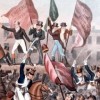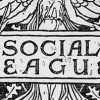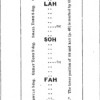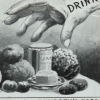
James Chandler, “On Peterloo, 16 August 1819”
“Peterloo” is the nickname that came to be given to the events of 16 August 1819, when a demonstration on St. Peter’s Field in Manchester in behalf of Parliamentary Reform was broken up by armed force, leaving about a dozen demonstrators dead and many others wounded by hoof and saber. Its claim to distinction in modern social and political history is that, with estimates of the crowd running to 60,000 people, it was probably at the time the largest mass peaceful demonstration ever assembled. Non-violent protest has become a fact of political life over the nearly two centuries since Peterloo. We now associate these kinds of events with names like Mahatma Gandhi and Martin Luther King, Jr. but the Reform Movement that took shape in Britain in the period after the defeat of Napoleon’s forces at Waterloo had evolved what was then a new set of tactics.

Florence S. Boos, “The Socialist League, founded 30 December 1884”
The Socialist League was one of several early socialist groups which arose in Great Britain during the 1880s. Among these, the League was distinctive for its eclectic membership and its focus on education and outreach as the most effective means to social change. Its notable members included William Morris, Tom Maguire, Andreas Scheu, Bruce Glasier, and for a time, Friedrich Engels, Eleanor Marx, and Edward Aveling. During its four years of greatest activity from 1885 through 1889, its vigorous program of lectures, open-air meetings, and publications, including Commonweal, reached a wide audience through campaigns on behalf of free speech, miners’ strikes, an international workers’ movement, and the reorganization of society “from the root up.” Its internationalism, strong support for the Second International, and consistent anti-imperialism gave its revolutionary ideals a broad, forward looking cast. Its focus on education, outreach, and alternative forms of social organization also attracted writers, artists and intellectuals who promoted its holistic ideals through creative works and contributed to its journal Commonweal. On the other hand, as an organization founded before the election of working-class representatives seemed feasible, its continued commitment to advocacy and “pure” socialism—as opposed to party politics—ultimately rendered it less viable than more pragmatically oriented groups such as the emerging Independent Labour Party.

Eleanor Courtemanche, “On the Publication of Fabian Essays in Socialism, December 1889″
The Fabian Essays, published in 1889 by an intellectual London club called the Fabian Society, aimed to make socialism palatable to a largely suspicious British public and became a surprise bestseller. The volume was edited by George Bernard Shaw, who was a leading figure in the Fabian Society before his career as a dramatist. In the Fabian Essays, the Fabians distanced themselves from the insurrectionary radicalism of both Hyndman’s Social Democratic Federation and Morris’s Socialist League, claiming instead that Britain was inevitably and gradually evolving into a sensible socialist state. The Fabians’ advocacy of pragmatic socialist parliamentary politics helped pave the way for the rise of the Labour Party in 1900.

Phyllis Weliver, “On Tonic Sol-fa, January 1842”
In January 1842, John Curwen launched Tonic Sol-fa – a system for teaching people to sing, which he believed would improve individual and national morality. By the third quarter of the century, Tonic Sol-fa numbered hundreds of thousands of practitioners at home and in the colonies, and had outstripped competing sight-singing methods. This essay argues that Tonic Sol-fa promoted a way of managing behavior that worked alongside rational recreation and newly introduced institutional surveillance strategies.

Annemarie McAllister, “On the Temperance Movement”
Temperance movements in Britain developed in a parallel, but significantly different, direction to those in the United States. Although there was a desire to control drinking by legislation, moral suasion was much more central and tended to fall into particular categories of argumentation. The discourses of temperance drew on religion, but developed their own categories, myths, and iconography, verbal and visual. An appreciation of this propaganda leads to a greater understanding of the landscape of popular culture in Britain in the nineteenth century.
